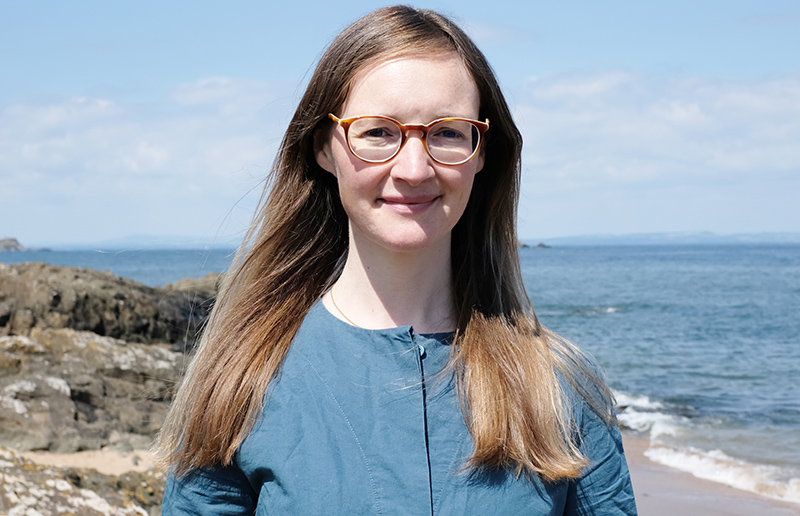
Sarah Lewis, research & policy director at the Passivhaus Trust, tells Project Scotland what, in her view, is good and what needs improving in the Scottish Government’s Passivhaus equivalent consultation proposals
As a Passivhaus advocate, and someone born and raised in Scotland, I was immensely proud when the Scottish Government announced its intention to deliver legislation for all newbuild housing to meet a ‘Scottish equivalent to the Passivhaus standard’. Introducing a Passivhaus equivalent would put Scotland on a global stage for climate leadership, help alleviate fuel poverty and improve energy security in Scotland.
However, the Passivhaus Trust is concerned that many of the current proposals set out in the consultation do not fully align with these aspirations, and if adopted, would fall significantly short of achieving meaningful impact.
It is now crucial for everyone committed to real change to voice their concerns and help guide the Scottish Government toward making the right choices. The good news is that the consultation references all the essential elements needed to set us on the right track toward a genuine Passivhaus equivalent.
We have submitted a detailed 47-page response to the consultation, and are encouraging our supporters to submit their own responses.
Encouragingly, we are delighted with the inclusion of a consultation proposal for certified Passivhaus buildings to be considered ‘deemed to satisfy’ Scottish building standards. This would increase the uptake of Passivhaus in Scotland and help pave the way for a Scottish Passivhaus equivalent. The consultation’s focus on quality assurance processes is a crucial and commendable step. We appreciate the Scottish Government’s understanding of the importance of robust checks to ensure better-performing buildings.
The timescales being proposed also seem sensible. We support the proposals for a stepped approach to bringing in the Scottish Passivhaus equivalent, with voluntary targets implemented in 2026 and mandatory targets from 2028. This transition period would allow for vital upskilling and training during a realistic timeframe.
That said, we are concerned that the current consultation proposals for modelling tools and targets will not be sufficient to achieve a genuine Passivhaus equivalent.
The consultation recommends retaining the current SBEM (Simplified Building Energy Model) methodology and introduces the concept of an as-yet-untested ‘Scottish wrapper’ for the new Home Energy Model (HEM) software, developed to replace SAP for the Future Home Standard (England). This contrasts with the modelling and design tool Passivhaus Planning Package (PHPP) that has been in use for 30+ years and is proven to accurately model building energy use. The Passivhaus Trust believes that PHPP should be accepted as a modelling methodology until such time as SBEM and the Scottish wrapper for HEM can be shown to produce energy forecasts with the same accuracy as PHPP and can be effectively used as a design tool.
Another major concern for the Passivhaus Trust is the metrics and targets being put forward in the consultation. We strongly recommend the use of absolute targets based on heating demand, peak heating load and EUI (energy use intensity). The relative ‘notional building’ energy targets proposed in the consultation document will not deliver the performance required to achieve Passivhaus equivalent levels of comfort and low energy bills.
The simplest way to explain why this matters is to compare it with the metrics used to buy a car. Consumers would expect to be able to compare car fuel efficiency based on the ‘absolute’ metric of miles per gallon. In contrast, using a relative ‘notional’ metric would be like comparing cars based on a percentage improvement relative to an undefined, hypothetical car. This method not only makes it difficult to make informed purchasing decisions, but also complicates understanding as to whether a new car meets its design targets once in use.
Absolute targets are more effective than relative (or notional) targets for several reasons:
1. Unambiguous standards: Absolute targets provide a clear, unambiguous benchmark.
2. Consistent performance benchmarks: By setting a fixed target, absolute standards ensure that performance is consistently evaluated against a set criterion, empowering end users.
3. Leadership: Adopting absolute targets positions Scotland as a leader in sustainable building practices and could influence broader national and international standards.
This consultation is split into two key phases. The current phase, which we are addressing now, is crucial for establishing the correct framework. We have one opportunity to get this right. Setting the right metrics and methodologies at this stage is essential for laying a solid foundation. The second phase, to be addressed next year, will focus on defining the detailed performance targets. If we do not establish the framework accurately now, it will undermine our ability to achieve a Passivhaus equivalent in the future.
The Scottish Government consultation on the Scottish Passivhaus equivalent is open until Wednesday 23 October, 2024. The Passivhaus Trust is calling for responses to the consultation to ensure the policy remains ambitious and addresses our concerns regarding modelling tools and targets.
Project Scotland invited the Scottish Government to respond to Sarah’s article. A Scottish Government spokesperson said, “In July, we published a consultation on our initial proposals for a Scottish equivalent to the Passivhaus Standard. It seeks views on the definition, approach and specific aspects of such changes. Detailed proposals, informed by the responses to this initial consultation, will be published in a further consultation in 2025. We are seeking all views and suggestions on our proposals. We recognise and appreciate the contribution made by The Passivhaus Trust and other members of our Working Group to date.”











